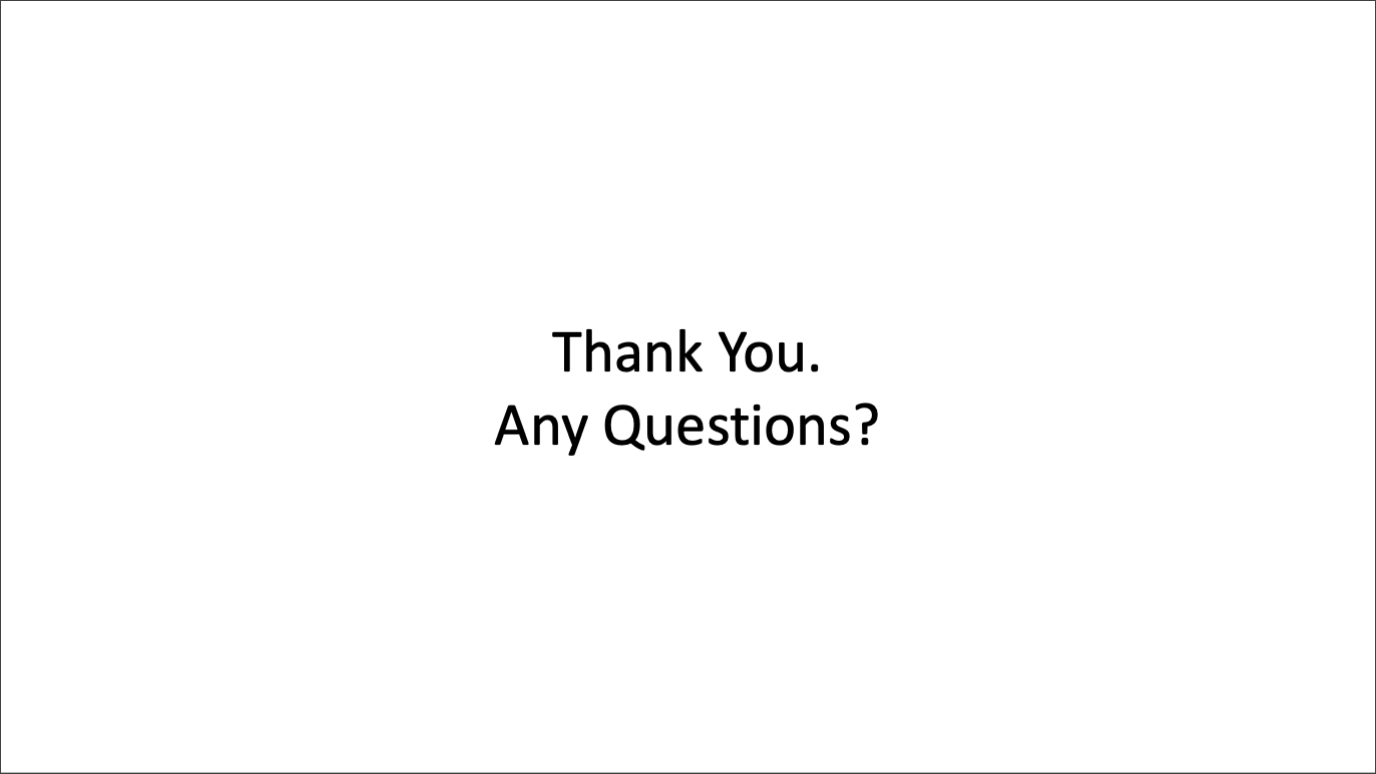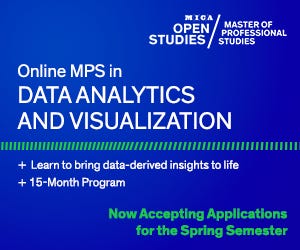Hi all,
Thanks to reader Denyse who sent me a note about last week’s newsletter that, “Not ending a presentation in ‘Thank you’ or ‘Questions’ is an interesting point (I think I ALWAYS do this).” So, let’s dig in and see why I’m so opposed to this kind of slide.
Let’s take a simple example and say you’re the author of this Brookings Institution report about how educating girls in developing countries is a great investment for families, communities, and countries. You go through your argument, presenting the data, facts, and statistics to drive home your message and call to action. You get to the end of your presentation with ample time for questions and answers when you show the slide above and say, “Thank you so much for having me. Are there any questions?”
At this point, let’s say you get some questions and there is some interesting discussion. All that time, the audience is left looking at this “Thank You. Any Questions?” slide. You’ve already said what’s on the slide—we don’t (well, shouldn’t) put everything we say on all of our slides anyways—so how does this slide help your audience? How does it reinforce your message and help them know what to do next?
Instead, what if you showed this slide and said, “Thank you so much for having me. What questions do you have?”
This is your takeaway message. This is the thing your audience has to stare at for those 10 or so minutes while you answer questions and engage in discussion. You can add your social media handle, email address, or even a QR code to the slide, but this last slide delivers content and reinforces the entire point of your presentation.
Also notice the difference between “Are there any questions?” and “What questions do you have?” I can’t remember who I learned this technique from—maybe Garr Reynolds?—but it’s a great, subtle point about leading questions. The answer to the first question is “yes” or “no”; the answer to the second is an actual question. In this way, you actually lead your audience to ask questions and engage with you.
I’ve always wanted to do a little study at one of the economics or public policy conferences I attend. In one session, I want the speakers to use the default “Thank You” slide and in another, I want the speakers to use this more active slide. Then, as attendees leave their sessions, I’d ask them a simple question: “What’s the main thing you took away from that session?” My guess is that the primary takeaway message will appear in more responses in the second session than the first.
The important point here is that your last slide (well, nearly all slides, really) should deliver content. It should help you deliver your core message, not some basic platitude that you can simply say. If I was to give presenters just one, simple, actionable thing they could do to improve their presentations, this would be it.
No more “Thank You” slides—exclamation point or not.
Thanks,
Jon
Distorted Maps and Storytelling with Tomas Pueyo
Tomas Pueyo is the author of Uncharted Territories, a newsletter where he tries to deeply understand how the world works to understand where it's going and nudge it in the right direction. He became world viral with his COVID articles, notably The Hammer and the Dance. He has 75,000 readers, and 300,000 on Twitter, where you can find him at
. Before Uncharted Territories, he has worked in tech companies in Silicon Valley for 15 years.In this week’s podcast, Tomas and I talk about his work with storytelling, AI, and how maps can distort our perception of the world—and the implications of those misperceptions.
What do you want in your dataviz YouTube videos?
Video creation is more time consuming than I would like it to be, but that’s just how it is. I’m trying to figure out how to be better about posting to my YouTube channel, so I’m seeking your input on what you would find most valuable. Do you like tutorials? Dataviz critiques? Something else? Let me know in the poll below and I’m going to try to focus and get a regular cadence going.
Things I’m Reading & Watching
Articles
A Reparations Roadmap for Philanthropy, Florant et al.
Is Unjustified Typesetting Justified?, Rolf F. Rehe (1978)
The Rectangle in Typography, Frans A. Janssen
Words Matter: Adopting inclusive and non-violent language in our work, Elizabeth Grimm
The Equitable Communications Guide, Innovation Network
What Students Learn with Personal Data Physicalization, Charles Perin
Data Visualizations
The collapse of insects, Reuters
At $40,000, Luxury Disney World Vacations Drain Wallets of Die-Hards, Bloomberg
Illustrating the gap between the global extreme poor and global emissions, World Bank
The Gaza Strip — in charts, Financial Times
TV, Movies, Music, and Miscellaneous
Only Murders in the Building, Hulu
The Morning Show, Apple TV
Welcome to Wrexham, Hulu
Lessons in Chemistry, Apple TV
Note: As an Amazon Associate I earn from qualifying purchases.
Sponsor: Maryland Institute College of Art
MICA’s Master of Professional Studies degrees offer intensive, online education designed to develop both creative and professional skills. Now accepting applications for the spring, summer, and fall semesters.











